
Kinkaku-ji: The Golden Pavilion of Kyoto
Discover the enchanting beauty of Kinkaku-ji, Kyoto's iconic Golden Pavilion, a serene Buddhist temple surrounded by stunning gardens.
Kinkaku-ji, or the Golden Pavilion, is a stunning Zen Buddhist temple in Kyoto, renowned for its exquisite architecture and serene surroundings. Built in the 14th century, this UNESCO World Heritage Site captivates visitors with its shimmering gold leaf exterior and picturesque reflection in the surrounding pond. As you stroll through the meticulously maintained gardens, you'll discover the harmonious blend of nature and spirituality that defines this iconic location. Kinkaku-ji is not only a significant cultural landmark, but it also offers a tranquil escape from the bustling city, making it a must-visit for every traveler.
A brief summary to Kinkaku-ji
- 1 Kinkakujicho, Kyoto, Kinkakujicho, Kita Ward, Kyoto, 603-8361, JP
- +8175-461-0013
- Visit website
- Monday 9 am-5 pm
- Tuesday 9 am-5 pm
- Wednesday 9 am-5 pm
- Thursday 9 am-5 pm
- Friday 9 am-5 pm
- Saturday 9 am-5 pm
- Sunday 9 am-5 pm
Local tips
- Visit early in the morning or on weekdays to avoid crowds for a more peaceful experience.
- Don't miss the opportunity to capture stunning photos of the pavilion's reflection in the pond.
- Explore the surrounding gardens and take your time to appreciate the tranquil atmosphere.
- Check the weather forecast, as sunny days enhance the visual impact of the golden structure.
- Consider visiting during autumn or spring to witness the beautiful seasonal foliage.
Getting There
-
Car
If you are driving from Settsu to Kinkaku-ji, first get on the Route 171 (Kinki Expressway) from Settsu. Follow the signs towards Kyoto and merge onto the Kyoto Jukan Expressway. Exit at the Kinkaku-ji exit and follow the signs to Kinkaku-ji. There is parking available near the temple, but it can fill up quickly during peak tourist seasons. Be prepared to pay a parking fee of around 500 yen.
-
Train
To reach Kinkaku-ji via public transportation, first take the train from Settsu to Kyoto Station. You can use the JR Takarazuka Line or the Hankyu Line. Once at Kyoto Station, transfer to the Karasuma Subway Line and travel to Kitaoji Station. From Kitaoji Station, take bus number 101 or 205 towards Kinkaku-ji. The bus ride will take about 30 minutes. The fare for the bus is approximately 230 yen.
-
Bus
If you are already in Kyoto, you can take a bus directly to Kinkaku-ji. From Kyoto Station, take bus number 101 or 205. Make sure to check the schedule as buses can vary in frequency. The ride will take around 40 minutes and costs about 230 yen. Get off at the Kinkaku-ji (金閣寺) stop, and you will be right at the entrance of the temple.
Discover more about Kinkaku-ji
Iconic landmarks you can’t miss
Daisen-in Temple
1.6 km
Discover tranquility at Daisen-in Temple, a serene Buddhist retreat in Kyoto, blending history with breathtaking gardens and Zen philosophy.

Kamogawa Park
3.2 km
Discover tranquility at Kamogawa Park, a scenic haven in Kyoto with picturesque river views, lush landscapes, and a peaceful atmosphere perfect for relaxation.

Kyoto Botanical Gardens
3.2 km
Discover the natural beauty and serene landscapes of Kyoto Botanical Gardens, a must-visit destination for nature enthusiasts and tourists alike.

Kyoto Imperial Palace
3.3 km
Experience the rich history and stunning beauty of Kyoto Imperial Palace, a must-see historical landmark and tranquil escape in Japan's ancient capital.

Nijō Castle
3.3 km
Explore the splendid Nijō Castle in Kyoto, a UNESCO World Heritage Site showcasing Japan's feudal history through stunning architecture and serene gardens.

Kyoto Gyoen National Garden
3.6 km
Discover the tranquil beauty of Kyoto Gyoen National Garden, a historical haven blending nature and culture in the heart of Japan's ancient capital.
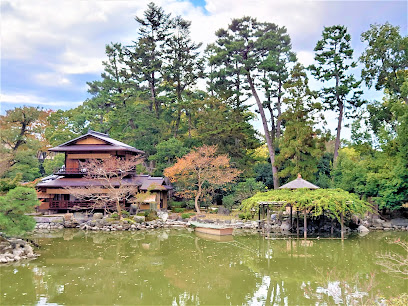
Face House
3.8 km
Experience the artistic allure of Face House, a vibrant cultural hub in Kyoto, blending tradition with modern creativity for an unforgettable visit.
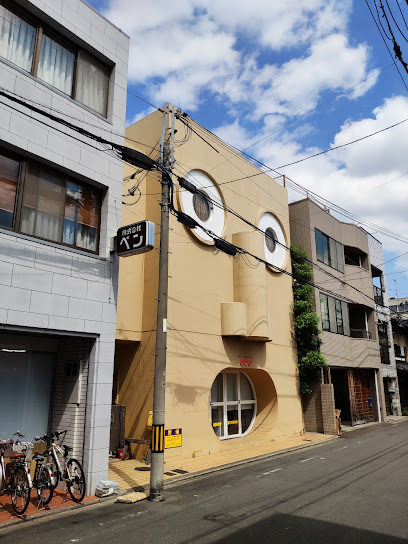
Kyoto Shibori Museum
3.9 km
Explore the rich tradition of Shibori at Kyoto Shibori Museum, where craftsmanship meets culture in stunning textiles.

Kamogawa Delta
4.0 km
Experience the tranquil beauty of Kamogawa Delta, a cultural landmark in Kyoto offering picturesque river views and lush park landscapes.

Kyoto Samurai Experience/和樂Waraku
4.1 km
Experience the rich history of the samurai at the Kyoto Samurai Experience, where tradition meets adventure in the heart of Japan.

Mausoleum of Emperor Go-Uda
4.1 km
Explore the Mausoleum of Emperor Go-Uda, a tranquil historical landmark in Kyoto, steeped in rich imperial heritage and surrounded by serene landscapes.

Kyoto International Manga Museum
4.1 km
Discover the vibrant world of manga at the Kyoto International Manga Museum, a unique cultural hotspot nestled in the heart of Kyoto.
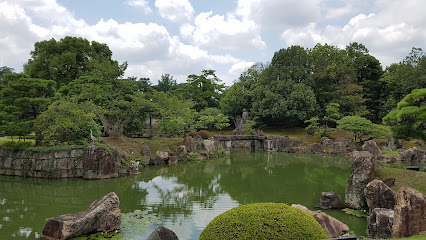
Karasuma Oike ruins, Heian-kyo mark
4.2 km
Explore the historic Karasuma Oike ruins in Kyoto, a captivating landmark where ancient history meets serene beauty.

Stepping Stones at Kojin
4.3 km
Discover tranquility and beauty at the Stepping Stones at Kojin, a serene tourist attraction in Kyoto's Sakyo Ward.
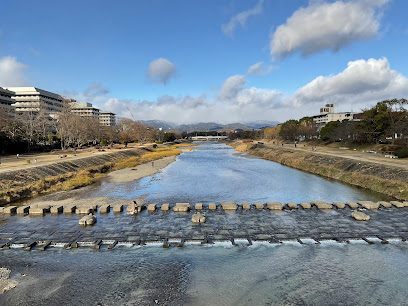
京都万華鏡ミュージアム 姉小路館
4.4 km
Explore the rich heritage of Japanese craftsmanship at Kyoto's Handicraft Museum, a must-visit for art enthusiasts and cultural explorers alike.

Unmissable attractions to see
Kinkakuji Temple
0.4 km
Experience tranquility at Kinkakuji Temple, Kyoto's enchanting Golden Pavilion surrounded by breathtaking gardens and serene reflections.

Ayasugimyojin
0.4 km
Discover the serene Ayasugimyojin Shinto shrine in Kyoto, a tranquil escape rich in history and cultural significance.
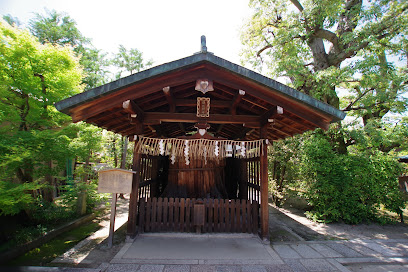
Shikichi Shrine (Wara Tenjingu)
0.4 km
Discover the tranquil beauty of Shikichi Shrine in Kyoto, a sacred site rich in Shinto tradition and surrounded by peaceful nature.

Kinkakuji-yu
0.4 km
Discover the tranquility of Kinkakuji-yu, a traditional sento in Kyoto, where relaxation meets the rich heritage of Japanese bathing culture.

Hirano Shrine
0.8 km
Experience the serene beauty and rich cultural heritage of Hirano Shrine, a hidden gem in Kyoto surrounded by cherry blossoms and tranquility.

Sakigakesakura
0.8 km
Discover the breathtaking beauty of Sakigakesakura, Kyoto's renowned cherry blossom site, where spring blooms with vibrant colors and cultural significance.

Toji-in Hojo (Abbot's Quarters)
1.0 km
Explore the serene beauty and rich history of Toji-in Hojo, an exquisite Buddhist temple in Kyoto, offering tranquility and cultural insights.

Tōji-in Temple
1.0 km
Experience the serene beauty and rich heritage of Tōji-in Temple, a hidden gem in Kyoto's spiritual landscape.
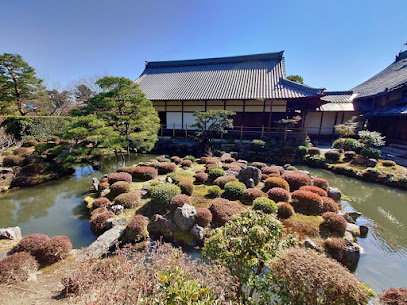
Toujiin Temple
1.0 km
Immerse yourself in the serene beauty and rich culture of Toujiin Temple, a must-visit Buddhist temple in Kyoto.

Kitano-temmangū Shrine
1.1 km
Explore the beauty and spirituality of Kitano-tenmangū Shrine, a must-visit Shinto shrine in Kyoto, rich in history and culture.
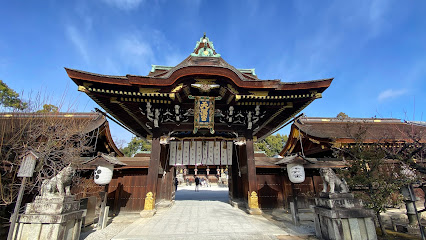
Kitano Tenmangu Shrine
1.1 km
Discover the serene beauty and cultural significance of Kitano Tenmangu Shrine, a must-visit Shinto shrine in the heart of Kyoto.

Ryoan-ji Chisoku no Tsukubai (Stone Washbasin)
1.1 km
Discover the tranquil beauty of Ryoan-ji, a UNESCO World Heritage Site in Kyoto known for its iconic rock garden and serene Stone Washbasin.

Ryoanji Kuri (Quarters)
1.1 km
Discover tranquility and beauty at Ryoanji Kuri, a serene Buddhist temple in Kyoto known for its iconic rock garden and peaceful surroundings.

Injō-ji Temple (Sembon Emma-dō)
1.1 km
Explore the tranquil beauty of Injō-ji Temple, a must-visit Buddhist temple in Kyoto offering peace, history, and stunning architecture.

Ryōan-ji
1.1 km
Explore Ryōan-ji, a serene Zen temple in Kyoto, renowned for its iconic rock garden and rich cultural heritage, a true gem of tranquility and beauty.

Essential places to dine
Okonomiyaki Katsu
1.3 km
Experience authentic okonomiyaki in Kyoto at Okonomiyaki Katsu - where flavors come alive in every savory pancake!

Steak Ichiro
2.7 km
Experience exquisite dining at Steak Ichiro, where premium steaks meet traditional Japanese hospitality in Kyoto's vibrant culinary scene.

cafe kozora
2.7 km
Experience authentic Italian cuisine at Cafe Kozora in Kyoto, where every dish tells a story and every sip transports you to Italy.

Nakau - Karasuma Imadegawa
2.9 km
Discover delicious Japanese comfort food at Nakau - Karasuma Imadegawa in Kyoto, featuring gyudon, soba noodles & more.

菜食ペッティロッソ 京都 Pettirosso Kyoto
3.1 km
Experience exquisite vegan cuisine at Pettirosso Kyoto, where health meets tradition in delightful dishes crafted from local ingredients.
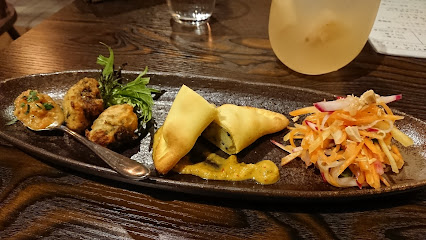
Restaurant Higakisaryo
3.2 km
Experience authentic Japanese cuisine at Restaurant Higakisaryo in Kyoto - where tradition meets culinary excellence.

Tategami
3.2 km
Experience authentic Kyoto-style Japanese cuisine at Tategami - where tradition meets innovation in every bite.

Kyoto cuisine Teramachi Yoshikura
3.7 km
Discover authentic Kyoto cuisine at Teramachi Yoshikura – where traditional flavors meet modern creativity in an unforgettable dining experience.

Kichisen
3.9 km
Discover Kichisen in Kyoto: A premier kaiseki restaurant showcasing seasonal ingredients and traditional Japanese culinary artistry.

Honke Owariya Main Branch
4.1 km
Experience authentic Kyoto flavors at Honke Owariya Main Branch - renowned for its handcrafted soba noodles and traditional Japanese sweets.

Saishuan Shiraki
4.2 km
Discover the authentic flavors of Japan at Saishuan Shiraki - a premier izakaya experience in the heart of Kyoto.

Hafuu
4.2 km
Discover Hafuu in Kyoto: where premium Japanese beef meets culinary excellence in an elegant setting.

Nakaso Tango
4.3 km
Discover authentic Japanese cuisine at Nakaso Tango, where tradition meets flavor in the heart of Kyoto.

Kikkoya
4.4 km
Experience the authentic taste of Japan at Kikkoya in Kyoto - where tradition meets culinary excellence.

Antonio
4.5 km
Discover authentic Spanish flavors at Antonio in Kyoto – where culinary artistry meets vibrant ambiance.

Markets, malls and hidden boutiques
Kyo-komono Kinugasa
1.2 km
Discover unique Japanese souvenirs at Kyo-komono Kinugasa, where tradition meets modern craftsmanship in the heart of Kyoto.

Bando Kinran - Co., Ltd. Bando Store
2.3 km
Explore the colorful tapestry of Kyoto at Bando Kinran, a premier fabric store offering exquisite textiles and crafting workshops.

kindal kyoto sanjo horikawa second hand store
3.9 km
Explore Kindal Kyoto Sanjo Horikawa for unique second-hand clothing and sustainable shopping in the heart of Kyoto's vibrant culture.
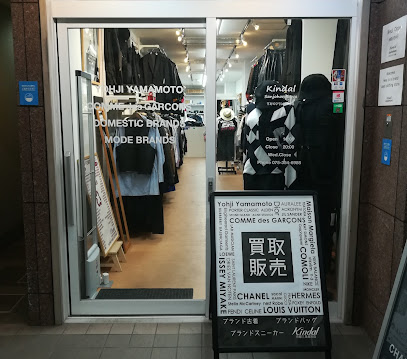
Rōji Tempo
4.5 km
Discover the vibrant shopping experience at Rōji Tempo, where Kyoto's rich culture meets modern retail in a beautiful setting.

Daikichi
4.5 km
Explore the exquisite collection of antiques at Daikichi, where every piece tells a story of Japan's rich cultural heritage in the heart of Kyoto.

京都・うつわ・食器 / Gallery Nisui 而水
4.7 km
Explore the exquisite artistry of Kyoto at Gallery Nisui, your premier destination for fine chinaware and unique ceramics.

D_MALL京都
4.7 km
Discover unique fashion accessories in Kyoto at D_MALL, where local style meets contemporary trends in a vibrant shopping atmosphere.

Furugiya KINJI Kyototen
4.8 km
Explore Furugiya KINJI Kyototen in Kyoto for a delightful vintage shopping experience featuring unique pre-loved clothing and accessories.

The Hamono Collection
4.8 km
Explore the artistry of Japanese knife-making at The Hamono Collection, a must-visit destination for culinary enthusiasts in Kyoto.

GOHOBI - Kyoto Sanjo-Teramachi
4.9 km
Explore a variety store in Kyoto offering unique bags, confectioneries, teas, and women's clothing, all reflecting the city's rich culture.

musubi -kyoto-
4.9 km
Discover the beauty of traditional kimonos and fashion accessories at Musubi, a gem in the heart of Kyoto’s cultural landscape.

Daimaru Kyōto Department Store
4.9 km
Explore the vibrant shopping scene at Daimaru Kyōto Department Store, where tradition meets modernity in the heart of Kyoto.

Bento&co Kyoto
4.9 km
Explore Bento&co Kyoto for unique Japanese kitchen supplies and bento boxes, perfect for souvenirs and culinary enthusiasts.

Pan-no-Tajima Shinkyogoku
4.9 km
Discover the authentic taste of Kyoto at Pan-no-Tajima Shinkyogoku, a bakery offering exquisite breads and pastries crafted with tradition.

Achuu
4.9 km
Discover Achuu, Kyoto's premier thrift store for unique clothing treasures that blend style, sustainability, and local culture.

Essential bars & hidden hideouts
Aux Mines
3.6 km
Experience the unique blend of traditional and modern at Aux Mines, a hidden bar in Kyoto offering a curated selection of drinks and a cozy ambiance.

Bar G3
4.0 km
Discover Bar G3, a vibrant Kyoto bar blending traditional charm with a modern twist, perfect for an unforgettable night out.

SAMGHA
4.4 km
Discover SAMGHA, Kyoto's premier wine bar, offering an exceptional selection of beverages in a cozy and welcoming atmosphere.

House of KI NO BI
4.6 km
Experience the serene ambiance and exquisite craft cocktails at the House of KI NO BI, a must-visit bar in Kyoto for every traveler.

別館 BAR K家
4.7 km
Immerse yourself in Kyoto's nightlife at 別館 BAR K家, where traditional charm meets innovative cocktails.

Bar K6
4.7 km
Discover the perfect blend of modern cocktails and traditional ambiance at Bar K6, a lively bar in the heart of Kyoto's nightlife.

Nouvelle Japonaise Arashiyama
4.9 km
Savor traditional Japanese cuisine with a creative twist at Nouvelle Japonaise Arashiyama, a culinary gem in the heart of Kyoto.

bar K-ya main building
4.9 km
Experience the vibrant nightlife of Kyoto at Bar K-ya, where cozy ambiance meets an eclectic drink selection in the heart of the city.

Bar Fishbowl
5.0 km
Discover the vibrant nightlife of Kyoto at Bar Fishbowl, where innovative cocktails and stunning city views await you.

Caamm bar
5.0 km
Discover the lively spirit of Kyoto at Caamm Bar, where traditional hospitality meets modern nightlife in a vibrant setting.

Oku
5.1 km
Experience the enchanting atmosphere of Oku, a hidden bar in Kyoto offering exquisite cocktails and a cozy ambiance for the perfect night out.

White door speakeasy
5.1 km
Discover the hidden charm of Kyoto at the White Door Speakeasy, where craft cocktails and vintage ambiance create an unforgettable nightlife experience.

Macho Bar
5.1 km
Experience the dynamic nightlife of Kyoto at Macho Bar, where cocktails meet entertainment in a bustling izakaya atmosphere.
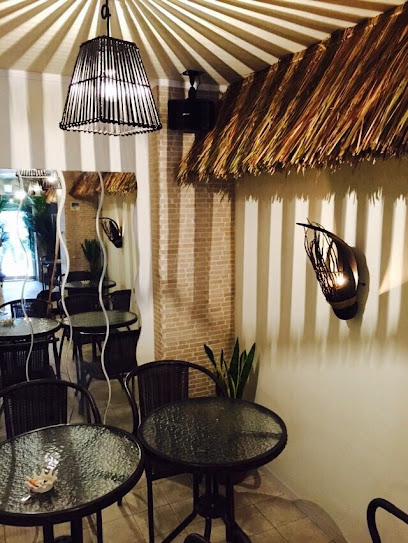
cafe&bar Miltons Kyoto
5.1 km
Experience the vibrant nightlife of Kyoto at Miltons, a cozy bar offering exceptional drinks and a welcoming atmosphere in Nakagyo Ward.

Bar Cordon Noir
5.1 km
Discover the enchanting Bar Cordon Noir in Kyoto, where exquisite whiskies and a cozy atmosphere await every visitor.




